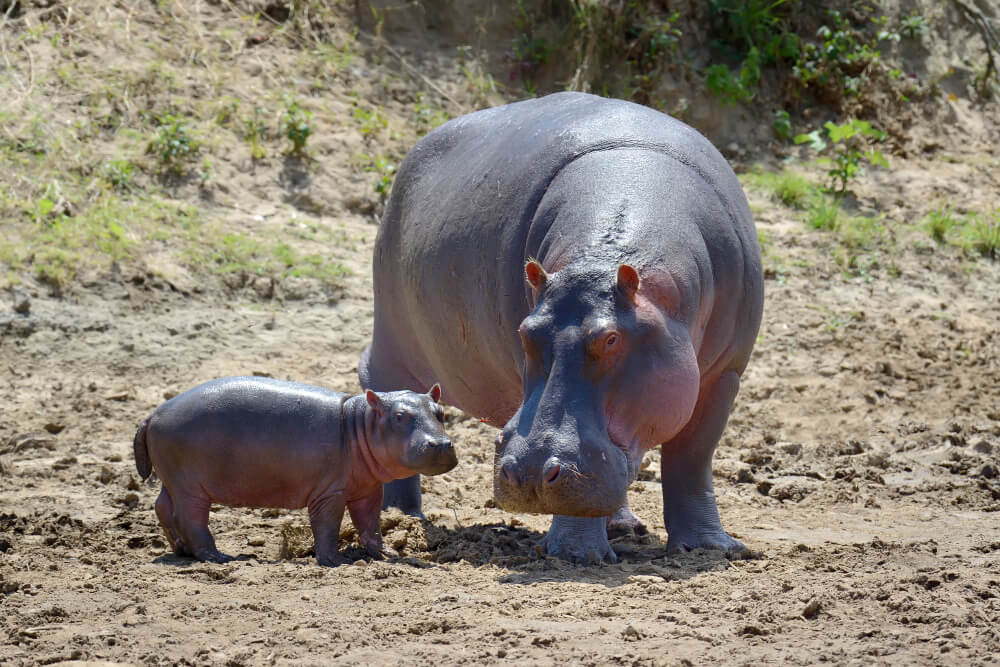Nestled in southwestern Uganda, Queen Elizabeth National Park is one of the country’s most iconic and biodiverse wildlife reserves, offering an extraordinary blend of wildlife encounters, stunning landscapes, and unique ecosystems. From the famous tree-climbing lions of Ishasha to the vast herds of elephants and the shimmering waters of the Kazinga Channel, Queen Elizabeth National Park is a microcosm of Africa’s diverse wildlife and natural beauty.(Explore the Wonders)
In this guide, we’ll take you on a journey through the wonders of Queen Elizabeth National Park, highlighting its wildlife, landscapes, and the unforgettable experiences that await in one of Uganda’s premier safari destinations.
An Overview of Queen Elizabeth National Park
Established in 1952, Queen Elizabeth National Park spans nearly 2,000 square kilometers (770 square miles) and is located between Lake Edward and Lake George in the Albertine Rift Valley. The park is Uganda’s most visited national park and is renowned for its incredible biodiversity, with over 95 species of mammals and more than 600 bird species recorded.
The park’s diverse ecosystems—ranging from savannah and acacia woodlands to wetlands and volcanic crater lakes—make it a hotspot for wildlife viewing, birdwatching, and scenic exploration. Visitors can expect to see everything from tree-climbing lions and hippos to buffaloes and the elusive leopards that roam the park’s vast plains.(Explore the Wonders)
Tree-Climbing Lions: The Stars of Queen Elizabeth National Park
One of the most unique and sought-after experiences in Queen Elizabeth National Park is encountering the tree-climbing lions of the Ishasha sector, located in the southern part of the park. Unlike most lions, which are primarily ground dwellers, the lions of Ishasha have developed the unusual habit of climbing and lounging in the branches of large fig and acacia trees.
Why Do Lions Climb Trees in Ishasha?
The exact reason for this behavior is still debated, but it’s believed that the lions climb trees to escape the heat of the savannah and the biting tsetse flies that plague the area. Tree-climbing also gives the lions a better vantage point to spot prey moving across the plains.
How to Spot Tree-Climbing Lions
The Ishasha sector is one of the few places in the world where you can observe this unique behavior. Game drives through Ishasha are focused on finding these lions lounging in trees, offering incredible photographic opportunities and a rare glimpse into their lives. It’s a thrilling experience to see these powerful animals perched high above the ground, relaxed yet ever watchful of their surroundings.(Explore the Wonders)
The Wildlife of Queen Elizabeth National Park
Beyond its famous lions, Queen Elizabeth National Park is home to a wealth of wildlife, making it one of the best places in Uganda for game drives and wildlife viewing.
The Big Game: Elephants, Buffalos, and More
The park is teeming with elephants, buffaloes, and hippos, which are commonly seen along the Kazinga Channel and throughout the park’s open savannahs. Large herds of elephants move through the park, often with young calves in tow, creating awe-inspiring wildlife encounters. The park’s vast herds of buffaloes are another highlight, often seen grazing or cooling off in the water.
Leopards are also present in the park, though they are elusive and more challenging to spot. However, Queen Elizabeth National Park is one of the few places in Uganda where you have a good chance of seeing them, particularly during early morning or late afternoon game drives.
Hippos and Crocodiles in the Kazinga Channel
One of the park’s most iconic features is the Kazinga Channel, a natural waterway that connects Lake Edward and Lake George. The channel is home to one of the largest concentrations of hippos in Africa, along with a healthy population of Nile crocodiles. Taking a boat cruise along the Kazinga Channel offers an up-close look at these massive animals as they lounge in the water or bask on the riverbanks.
The boat cruise also provides excellent opportunities for birdwatching, as the channel attracts a wide variety of bird species, including African fish eagles, kingfishers, pelicans, and flamingos.

Primate Encounters in the Kyambura Gorge
For those interested in primates, a visit to the Kyambura Gorge, also known as the “Valley of Apes,” is a must. This lush, tropical forest is home to a small population of chimpanzees, and visitors can participate in chimpanzee trekking to observe these fascinating creatures in their natural habitat.
The trek through the gorge is a scenic adventure in itself, as the trail winds through dense forest, over rivers, and past waterfalls. The experience of seeing chimpanzees swinging through the trees or hearing their calls echo through the gorge is one of the most memorable activities in Queen Elizabeth National Park.
Birdwatching Paradise: Over 600 Bird Species
Queen Elizabeth National Park is a paradise for birdwatchers, boasting one of the highest diversity of bird species in Africa. With over 600 recorded species, the park is an essential destination for both novice and experienced birders.
Some of the park’s birding highlights include:
- African fish eagle: Often seen perched along the Kazinga Channel, scanning the water for fish.
- Shoebill stork: A rare and prehistoric-looking bird that can sometimes be spotted in the park’s wetlands.
- Malachite kingfisher: Known for its bright colors, this small bird is frequently seen near water sources.
- Lesser flamingo: Large flocks of flamingos can be found around the park’s salt lakes, creating stunning displays of color.
Birding safaris in Queen Elizabeth National Park offer the chance to see a wide variety of species, from waterbirds along the Kazinga Channel to forest birds in the Maramagambo Forest.
Scenic Wonders: Crater Lakes and Volcanic Landscapes
In addition to its wildlife, Queen Elizabeth National Park is renowned for its striking volcanic landscapes, particularly its numerous crater lakes and the Katwe Explosion Crater. These craters were formed by volcanic activity millions of years ago and now provide stunning views and unique ecosystems.
Exploring the Crater Lakes
A visit to the park’s crater lakes is a must for anyone interested in geology and breathtaking scenery. The Katwe Crater Lake is the most famous, known for its salt mining and beautiful views of the surrounding landscape. Visitors can also explore the Bunyaruguru Crater Field, home to over 20 crater lakes, many of which are surrounded by lush vegetation and teeming with birdlife.(Explore the Wonders)
The crater lakes offer a serene contrast to the park’s open savannahs, and they provide a peaceful setting for picnics, photography, and birdwatching.
Ishasha Plains: A Savannah Wonderland
The Ishasha Plains, located in the southern part of the park, are not only famous for their tree-climbing lions but also for their wide-open landscapes, which are perfect for game viewing. The plains are home to topi antelope, buffaloes, and large herds of Uganda kobs, often seen grazing in the golden grass. The open terrain makes this area particularly good for spotting wildlife from a distance, and the light here is often perfect for photography.
Top Activities in Queen Elizabeth National Park
There’s no shortage of activities to enjoy in Queen Elizabeth National Park, from wildlife safaris and boat cruises to hiking and cultural experiences. Here are some of the top activities to include in your itinerary:
1. Game Drives
Game drives are the best way to explore the park’s diverse habitats and see its wildlife up close. The park is divided into several game drive areas, including Kasenyi Plains, Mweya Peninsula, and the Ishasha sector. Early morning and late afternoon drives are the best times to spot predators like lions and leopards, as well as large herds of elephants, buffaloes, and antelopes.
2. Kazinga Channel Boat Cruise
A boat cruise along the Kazinga Channel is one of the park’s most popular activities. The cruise provides close encounters with hippos, crocodiles, and waterbirds, as well as great views of elephants and buffaloes coming to the water’s edge to drink. The two-hour boat trip is both relaxing and informative, offering insights into the park’s ecology and wildlife.
3. Chimpanzee Trekking in Kyambura Gorge
Chimpanzee trekking in the Kyambura Gorge is a unique opportunity to see one of our closest relatives in their natural habitat. The gorge’s dense tropical forest is home to a small group of habituated chimpanzees, and tracking them through the forest is a thrilling adventure. In addition to chimpanzees, the gorge is also home to other primates, including red-tailed monkeys and black-and-white colobus monkeys.
4. Birdwatching Safaris
For bird lovers, a dedicated birdwatching safari is a must. The park’s wetlands, lakes, and forests provide the perfect habitats for a wide variety of species, from waterbirds to raptors. Whether you’re cruising along the Kazinga Channel or exploring the crater lakes, you’ll have plenty of opportunities to spot both common and rare birds.
5. Cultural Encounters
Queen Elizabeth National Park is surrounded by local communities with rich cultural traditions. Visitors can participate in cultural tours to learn about the daily lives of the Bakonzo and Banyaruguru people, experience traditional music and dance, and visit local craft markets.
Best Time to Visit Queen Elizabeth National Park
The best time to visit Queen Elizabeth National Park is during the dry seasons, from June to September and December to February. During these months, the weather is more favorable for game drives and other outdoor activities, and wildlife is easier to spot as animals gather around water sources.
The park can also be visited during the wet seasons (March to May and October to November), but the rain can make some roads difficult to navigate, and wildlife is more dispersed.
FAQs(Explore the Wonders)
What animals can I see in Queen Elizabeth National Park?
You can expect to see elephants, lions, leopards, buffaloes, and hippos, as well as chimpanzees in the Kyambura Gorge and hundreds of bird species across the park.
When is the best time to visit Queen Elizabeth National Park?
The best time to visit is during the dry seasons (June to September and December to February), when wildlife viewing is at its best.
What is the Kazinga Channel known for?
The Kazinga Channel is known for its large populations of hippos, crocodiles, and waterbirds, as well as excellent wildlife viewing opportunities along its shores.
Can I see tree-climbing lions in Queen Elizabeth National Park?
Yes, the Ishasha sector of the park is famous for its tree-climbing lions, a rare behavior seen in only a few places in Africa.(Explore the Wonders)
How difficult is chimpanzee trekking in the Kyambura Gorge?
Chimpanzee trekking in the Kyambura Gorge can be moderately challenging, as the terrain is steep and the forest is dense. However, it is a rewarding experience for wildlife lovers.
Queen Elizabeth National Park is a wildlife wonderland that offers a perfect blend of adventure, discovery, and relaxation in the heart of Uganda’s wilderness. Whether you’re tracking tree-climbing lions, cruising along the Kazinga Channel, or trekking through the Kyambura Gorge in search of chimpanzees, every moment in the park reveals new wonders. With its rich biodiversity, breathtaking landscapes, and unique wildlife encounters, Queen Elizabeth National Park is a must-visit destination for anyone looking to explore the natural beauty of East Africa.(Explore the Wonders)










